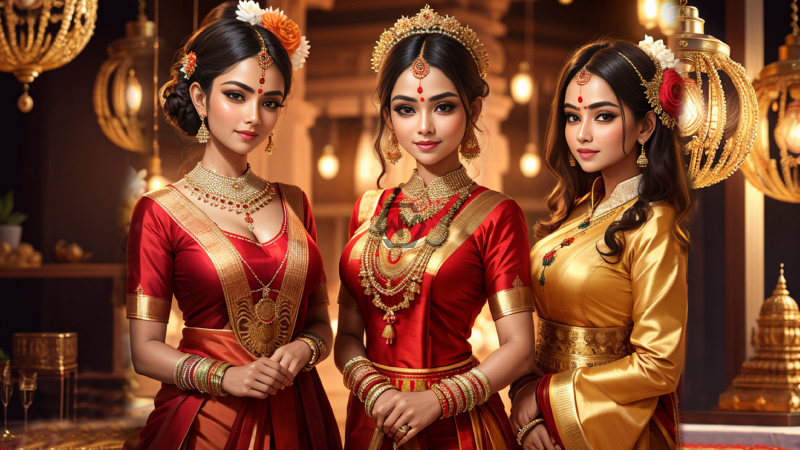Sarees are a vital component of the nation’s sociocultural fabric. They have endured through the ages and play a significant part in our society’s customary transcendence. There are clear, long-standing similarities between wearing a saree and attending an Indian wedding.
The six yards have been a reflection of ethnic artistry and profound cultural heritage on the one hand, while infusing creative contemplation in design language on the other, according to Anindita Sardar, Head of Design and Curation, Taneira. “Much like the narrative of our recent campaign, “shaadi toh jaise ek beautiful si saree hai,” the six yards have been a reflection of ethnic artistry and profound cultural heritage.
Types of Sarees
Sarees are an important part of Indian culture and have a long history of being worn at weddings. Through its six yards, Taneira, Head of Design and Curation, reflects ethnic artistry and cultural history.
The brand’s products demonstrate the seamless fusion of heritage and modernity because they are made from natural fibers and authentic weaves using more than 100 clusters.
- Taneira showcases Indian sarees, showcasing the artistry and cultural history.
- Baluchari sarees are classic, colorful, and versatile.
- Brocaded silk, pastel banarasi sarees enhance newlyweds’ wardrobes.
Baluchari sarees are a classic option for any event because of their vivid colors and intricate stitching. When attending an art event or making a statement at a cousin’s wedding, these sarees are ideal.
A common bridal outfit with complex patterns and zari embroidery is the Ghar Chola. They are ideal for family gatherings and Gujarati weddings. With hues inspired by sunsets and genuine traditional designs, tissue kanchi is a lightweight, delicate alternative.
Brocaded South Indian silk elevates the wardrobes of newlyweds. Pastel-colored banarasi provides a wonderful synthesis of ancient grace and modern poise. These pastel Banarasi sarees exude panache and grace, making them ideal for special occasions and festive gatherings.



